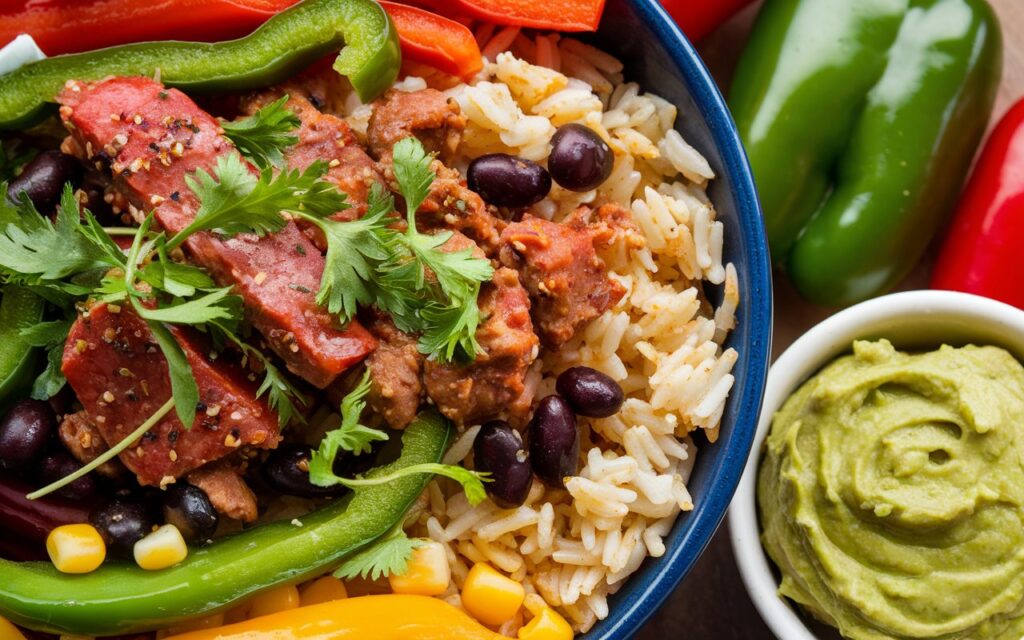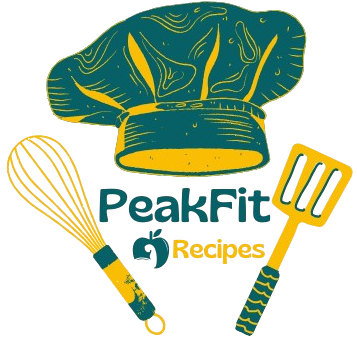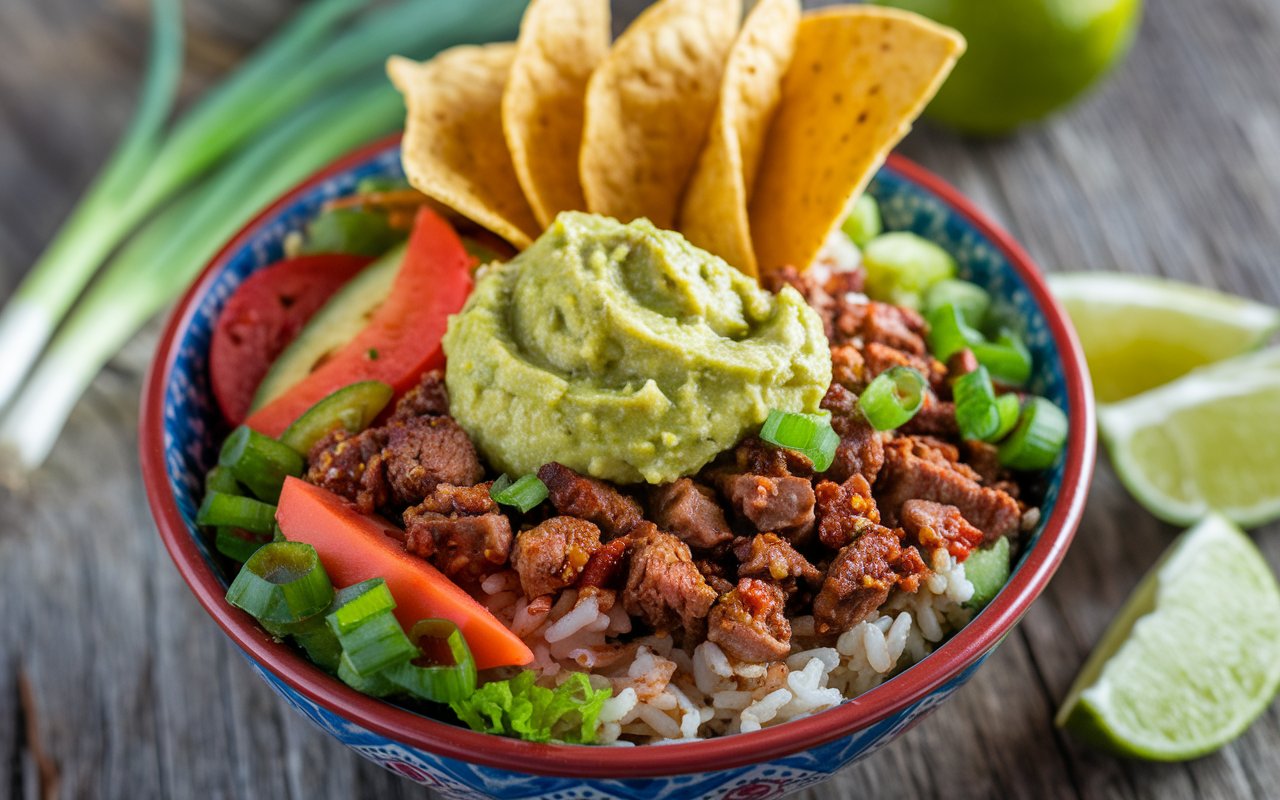What Is a Taco Bowl Made Of?
When you think of Mexican-inspired meals, the taco bowl undoubtedly stands out. Indeed, it’s a perfect amalgamation of flavors, textures, and nutrition in a single, visually appealing dish. However, you might be wondering, what exactly is a taco bowl made of? In this article, we will dive deep into the components, preparation techniques, and variations of taco bowls, thereby offering a complete guide to this versatile and customizable meal.
Introduction
A taco bowl is a deconstructed taco served in an edible shell or bowl, blending various ingredients to form a balanced and satisfying meal. Unlike traditional tacos, where fillings are encased in tortillas, a taco bowl offers an open canvas for creativity.
This dish typically includes seasoned proteins, a variety of fresh and cooked vegetables, hearty grains, and a medley of toppings such as guacamole, salsa, and shredded cheese. The result? A vibrant, customizable bowl that’s as delightful to eat as it is to look at.
If you’re new to making taco bowls, there are endless ways to craft your perfect version. For example, this taco seasoning recipe offers a homemade touch to elevate your dish, while this guide to bowl meal prep provides inspiration for efficient assembly.
The Key Components of a Taco Bowl
The beauty of a taco bowl lies in its flexibility. Below are the essential components, each of which contributes to the dish’s flavor and nutritional value.
1. Proteins: The Foundation
Proteins serve as the heart of the taco bowl, providing both flavor and nutrition. Some popular options include:
- Ground Beef: A classic choice, seasoned with cumin, chili powder, and paprika.
- Grilled Chicken: Juicy, tender pieces marinated in lime and spices.
- Shrimp: Sautéed with garlic and chili for a seafood twist.
- Plant-Based Proteins: Black beans, pinto beans, or lentils work great for vegetarians.
Pro Tip:
For optimal taste, therefore, cook proteins with fresh garlic, onion, and a splash of lime juice. Additionally, for vegetarians, tofu or tempeh crumbles seasoned with taco spices make a great alternative.
2. Grains: The Hearty Base
A sturdy grain layer supports the toppings and absorbs the juices, creating a cohesive dish. Choices include:
- White Rice: A neutral base that complements bold flavors.
- Brown Rice: Adds a nutty taste and fiber.
- Quinoa: A protein-rich grain alternative.
- Cauliflower Rice: A low-carb option for those on keto or paleo diets.
Cook grains with a touch of lime zest and cilantro to enhance their flavor profile.
3. Vegetables: Freshness and Crunch
No taco bowl is complete without fresh, vibrant vegetables. Incorporate both raw and cooked veggies for texture variety. Common choices are:
- Shredded lettuce or cabbage
- Diced tomatoes or pico de gallo
- Roasted corn or sweet corn kernels
- Sautéed bell peppers and onions
- Black beans for extra protein
Health Tip:
Choose seasonal vegetables to ensure maximum freshness and flavor.
4. Toppings: Flavor Amplifiers
The toppings are where you can get creative. A few popular options include:
- Cheese: Cheddar, cotija, or Monterey Jack.
- Sour Cream or Greek Yogurt: For a creamy contrast.
- Guacamole or Avocado Slices: Adds creaminess and healthy fats.
- Salsa: Pico de gallo, verde, or mango salsa for sweetness.
- Fresh Cilantro and Lime Wedges: Essential for garnish.
For an extra kick, drizzle some hot sauce or sprinkle crushed tortilla chips on top.
5. The Taco Shell Bowl
The crispy taco shell bowl is not just a serving vessel; rather, it’s an integral part of the meal. Typically, these are made by either baking or frying large tortillas into a bowl shape. However, if you’re pressed for time, store-bought taco shells offer a convenient and equally delicious alternative.
How to Make a Taco Bowl
Creating a taco bowl is simple, and the process can be broken down into a few steps.
Step 1: Cook the Proteins
Season ground beef, chicken, or shrimp with taco spices and cook until done. If using plant-based proteins, sauté beans or tofu with similar spices for flavor.
Step 2: Prepare the Grains
Cook rice, quinoa, or cauliflower rice as per package instructions. Enhance the flavor by stirring in fresh cilantro and lime juice.
Step 3: Shape the Taco Shell Bowl
- Preheat the oven to 375°F (190°C).
- Place a large tortilla over a taco mold or oven-safe bowl.
- Bake for 8–10 minutes or until golden and crispy.
Step 4: Assemble Your Taco Bowl
- Start with a base layer of grains.
- Add a generous portion of proteins.
- Top with fresh and roasted vegetables.
- Finish with cheese, guacamole, and your favorite sauces.

Customizations and Variations
One of the best things about taco bowls is how adaptable they are to different dietary preferences and cuisines.
Low-Carb Taco Bowl
- Swap rice with cauliflower rice.
- Replace beans with grilled zucchini or mushrooms.
- Skip the taco shell and serve in a regular bowl.
Vegan Taco Bowl
- Use black beans or lentils as the protein.
- Replace cheese with vegan shredded cheese or nutritional yeast.
- Use dairy-free yogurt instead of sour cream.
Seafood Taco Bowl
- Opt for grilled shrimp, salmon, or fish tacos as the protein.
- Pair with mango salsa for a tropical flair.
Nutritional Benefits of Taco Bowls
Taco bowls are more than just delicious—they’re packed with essential nutrients that support a balanced diet. By combining proteins, grains, vegetables, and healthy fats, taco bowls offer a wholesome meal suitable for various dietary preferences. Here’s a detailed breakdown of the nutritional benefits of taco bowls:
1. High-Quality Proteins for Muscle Repair
Proteins are the foundation of a nutritious taco bowl. They help build and repair muscle tissues while keeping you feeling full longer.
- Lean Meats: Options like grilled chicken or ground turkey provide high protein with low fat.
- Plant-Based Proteins: Black beans, lentils, and tofu offer essential amino acids and are rich in fiber.
- Seafood: Shrimp or fish adds omega-3 fatty acids, supporting heart and brain health.
2. Fiber-Rich Vegetables for Digestive Health
Taco bowls are loaded with fiber-packed vegetables that improve digestion and provide essential vitamins.
- Leafy Greens: Lettuce, spinach, or kale boosts your intake of vitamins A and C.
- Tomatoes: A rich source of antioxidants like lycopene, which supports heart health.
- Corn and Beans: Offer dietary fiber that promotes gut health and stabilizes blood sugar levels.
Adding a variety of colorful vegetables ensures a diverse range of nutrients and enhances the dish’s flavor.
Fiber-Rich Meal Ideas
Why Fiber is Important
3. Healthy Fats for Sustained Energy
Taco bowls often include healthy fats that provide long-lasting energy and support brain function.
- Avocado and Guacamole: Packed with monounsaturated fats and potassium, avocados are heart-healthy and filling.
- Cheese: Provides calcium and protein, though portion control is essential.
- Olive Oil: Sometimes used in dressings or cooking, it’s an excellent source of good fats.
4. Energy-Boosting Grains
Grains form the base of most taco bowls, delivering complex carbohydrates for sustained energy.
- Brown Rice: High in fiber, magnesium, and selenium, supporting heart and metabolic health.
- Quinoa: A gluten-free grain that’s rich in protein and iron.
- Cauliflower Rice: A low-carb alternative for those looking to reduce calorie intake without compromising on flavor.
5. Antioxidants and Immunity Boosters
Fresh taco bowl ingredients like peppers, tomatoes, and cilantro are rich in antioxidants. These compounds neutralize harmful free radicals and support overall immunity.
- Bell Peppers: Loaded with vitamin C, essential for skin and immune health.
- Cilantro: Contains anti-inflammatory properties and adds a fresh flavor.
- Limes: High in vitamin C and aids in iron absorption from plant-based ingredients.
6. Customizable to Meet Dietary Goals
Whether you’re following a specific diet or aiming for a balanced meal, taco bowls can be tailored to fit your needs.
- Low-Carb Diets: Use cauliflower rice and skip the taco shell.
- Vegan Diets: Include beans, avocado, and plant-based cheese for protein and fats.
- Gluten-Free Diets: Opt for corn tortillas or serve without a shell.

Frequently Asked Questions (FAQs)
What are taco shell bowls made of?
Taco shell bowls are traditionally made from large flour tortillas, shaped into bowls and baked or fried. They can also be made with corn tortillas for a gluten-free option.
What’s the difference between a burrito bowl and a taco bowl?
While both are deconstructed versions of their respective dishes, burrito bowls usually contain larger portions of rice and beans. Taco bowls are lighter, focusing more on fresh vegetables and crispy taco shells.
How do you use taco bowl molds?
Place a large tortilla over the mold, ensuring it drapes evenly. Bake at 375°F (190°C) for about 10 minutes until the shell is firm and crispy.
How much ground beef per person for a taco bowl?
Plan for about 4 ounces of ground beef per serving. Adjust based on appetite or if using additional protein sources.
Can taco bowls be made gluten-free?
Yes, taco bowls can easily be made gluten-free. Use corn tortillas instead of flour tortillas for the shell and ensure that any packaged ingredients, like seasonings or sauces, are labeled gluten-free.
How do you keep taco shells crispy?
To keep taco shells crispy, store them in an airtight container after they’ve cooled. Avoid adding wet ingredients like salsa or sour cream until just before serving.
What’s the best cheese for taco bowls?
The best cheese depends on your flavor preference. Popular options include cheddar, Monterey Jack, cotija, or a blend of Mexican cheeses for authenticity.
Can taco bowls be meal-prepped?
Absolutely! Assemble the ingredients separately and store them in airtight containers. Keep wet toppings like guacamole or salsa in separate containers to maintain freshness.
Are taco bowls healthy for weight loss?
Taco bowls can indeed be a healthy option for weight loss. However, this largely depends on the ingredients you choose. For instance, using lean proteins, skipping the tortilla shell, and focusing on fresh vegetables and low-fat toppings can significantly reduce calories. Additionally, these choices help you create a more balanced and nutrient-dense meal. Therefore, with mindful ingredient selection, taco bowls can align perfectly with your weight loss goals.
What are some vegetarian taco bowl options?
Vegetarian taco bowls, for instance, can feature black beans, pinto beans, roasted vegetables, tofu, or tempeh as the main protein source. Additionally, you can pair these with grains and plenty of fresh toppings to create a balanced and flavorful dish.
How can I make taco bowls spicier?
To make taco bowls spicier, add jalapeños, hot salsa, or drizzle with your favorite hot sauce. You can also season proteins with extra chili powder or cayenne.
What’s the difference between a taco salad and a taco bowl?
A taco salad focuses more on greens as the base, while a taco bowl includes grains, proteins, and is often served in an edible shell.
Can I use store-bought taco seasoning for taco bowls?
Yes, store-bought taco seasoning is convenient and flavorful. However, you can also make your own seasoning blend for better control over ingredients and flavor.
How do I serve taco bowls for a party?
To make your gathering more engaging, set up a taco bowl bar with various proteins, grains, vegetables, and toppings. Additionally, allow guests to customize their bowls for a fun and interactive dining experience
Conclusion
The nutritional benefits of taco bowls make them an excellent option for anyone looking to enjoy a flavorful and healthy meal. Moreover, their balance of proteins, vegetables, grains, and healthy fats ensures a nutrient-packed dish. Additionally, the flexibility to customize ingredients makes taco bowls suitable for various dietary preferences and goals. Therefore, they are not only delicious but also highly versatile, appealing to a wide range of tastes and nutritional needs. In short, taco bowls are a fantastic choice for those seeking both health and flavor in their meals.. Moreover, with their balance of proteins, grains, vegetables, and fats, taco bowls are a true powerhouse of nutrients. In addition, their flexibility allows you to cater to specific dietary preferences or restrictions, thereby ensuring they’re as good for you as they are delicious. Ultimately, taco bowls combine health, flavor, and versatility in a single dish.
By incorporating fresh, whole ingredients, taco bowls can be part of a balanced diet that supports overall health and wellness. Ready to try one? Explore our taco bowl recipes for inspiration!

